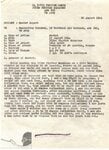WriterGirl
Recruit
- 7
- Apr 20, 2021
Non-aviator here--I'm writing about a P-39 over the South Pacific in WWII. In a steep bank, the pilot began firing on a Nakajima B5N from "a 90 degree deflection and closed in to 10 degrees". He scored a hit and the enemy aircraft went down in flames. Can someone explain this description to me? I assume a 90% defection would have required much skill (the pilot would have shot ahead of the target by estimating its distance and speed)? What would this have looked like from the pilot's perspective and also from the Kate's perspective?
The pilot destroyed three other enemy aircraft that day as well--one a Zeke that he attacked by firing a 10 degree deflection shot at a range of 200 yards, another, a Zeke-type, that he attacked by firing a 5 degree deflection shot at a range of 200 yards closing to 50 yards, and the last, a Tony that he overtook and in a rear attack, managed a 30 degree deflection shot.
Many thanks.
The pilot destroyed three other enemy aircraft that day as well--one a Zeke that he attacked by firing a 10 degree deflection shot at a range of 200 yards, another, a Zeke-type, that he attacked by firing a 5 degree deflection shot at a range of 200 yards closing to 50 yards, and the last, a Tony that he overtook and in a rear attack, managed a 30 degree deflection shot.
Many thanks.

